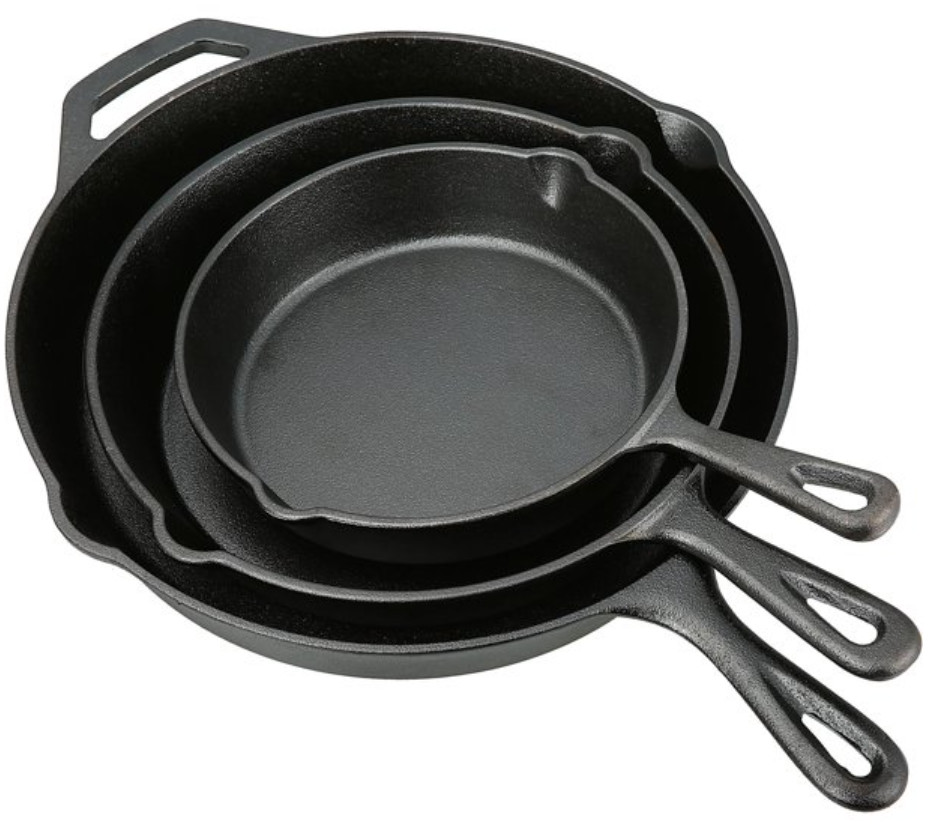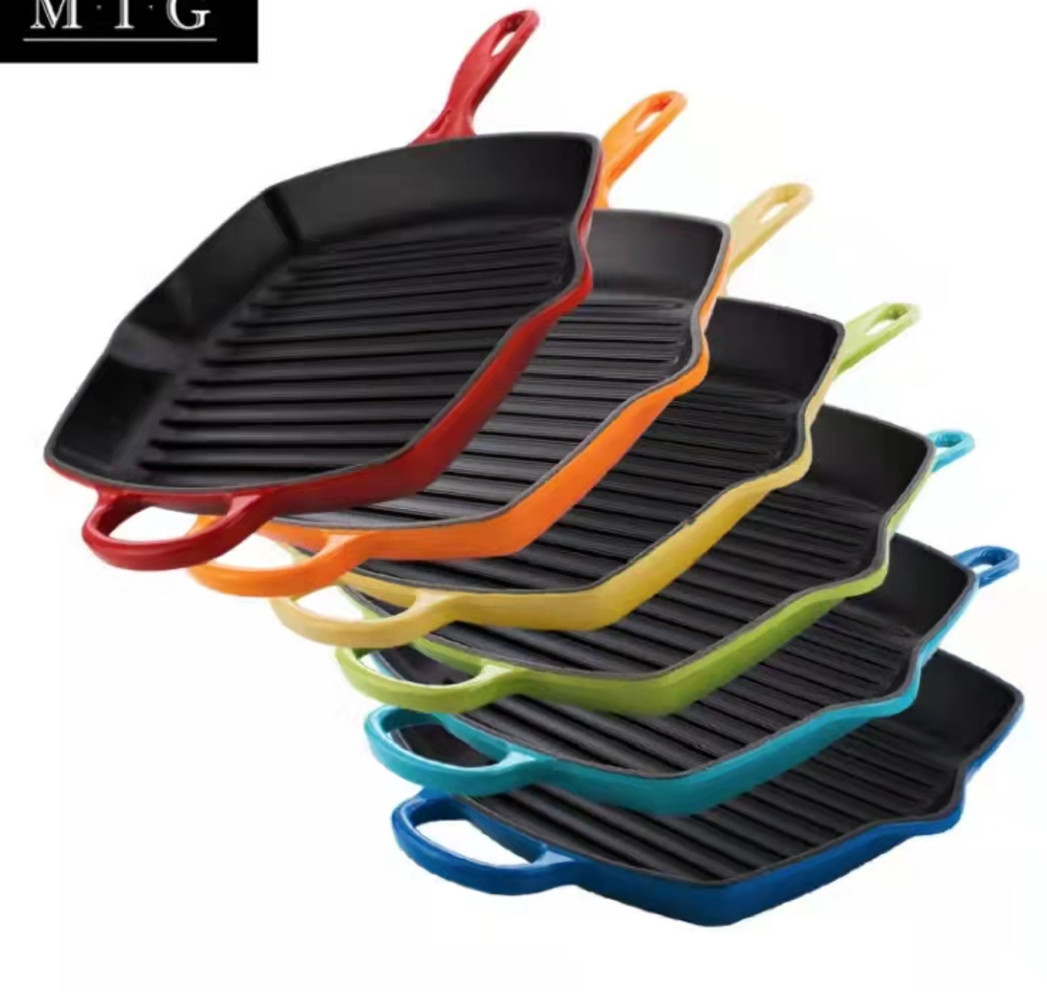- 150 m uz dienvidiem, West DingWei Road, Nanlou Village, Changan Town, GaoCheng Area, Shijiazhuang, Hebei, Ķīna
- monica@foundryasia.com
Jūn . 12, 2023 18:48 Atpakaļ uz sarakstu
KAS IR ČUGUNA TRAUKI
Kas ir čuguna virtuves piederumi:
Čuguna virtuves trauki ir lieljaudas virtuves trauki, kas izgatavoti no čuguna, kas tiek novērtēti ar to siltuma saglabāšanu, izturību, spēju lietot ļoti augstā temperatūrā un nepiedegošo gatavošanu, ja tie ir pareizi pagatavoti.
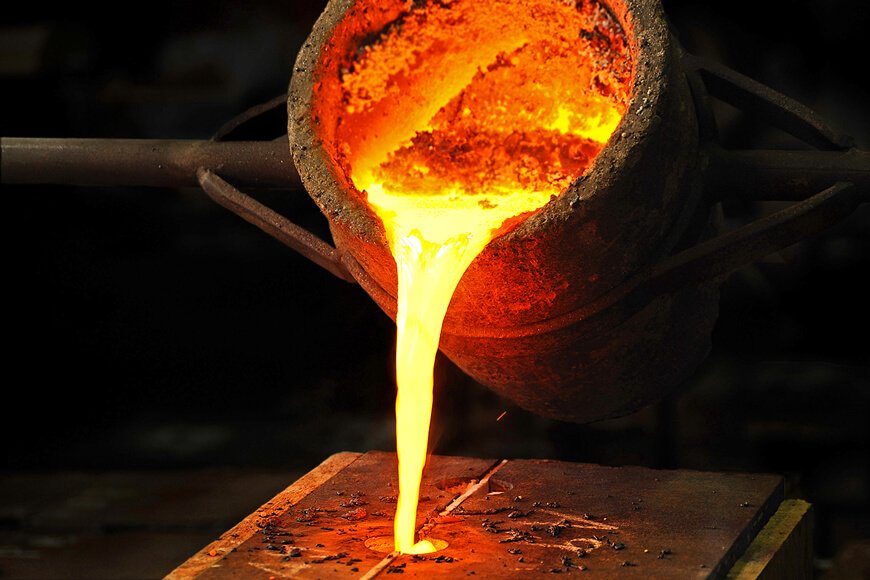
Čuguna trauku vēsture
In Asia, particularly China, India, Korea and Japan, there is a long history of cooking with cast iron vessels. The first mention of a cast-iron kettle in English appeared in 679 or 680, though this wasn't the first use of metal vessels for cooking. The term pot came into use in 1180. Both terms referred to a vessel capable of withstanding the direct heat of a fire. Cast-iron cauldrons and cooking pots were valued as kitchen items for their durability and their ability to retain heat evenly, thus improving the quality of cooked meals.
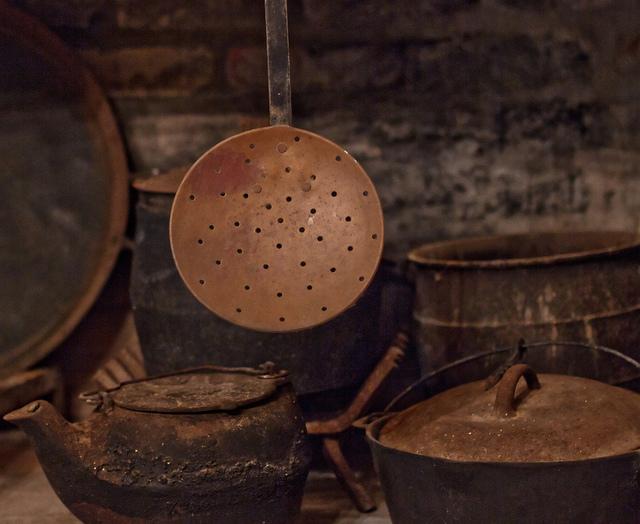
Eiropā un Amerikas Savienotajās Valstīs pirms virtuves plīts ieviešanas 19. gadsimta vidū maltītes gatavoja pavardā, un gatavošanas katli un pannas bija vai nu paredzēti lietošanai pavardā, vai arī iekarināmi tajā.
Cast-iron pots were made with handles to allow them to be hung over a fire, or with legs so that they could stand in the coals. In addition to Dutch ovens with three or four feet, which Abraham Darby I secured a patent in 1708 to produce, a commonly used cast-iron cooking pan called a spider had a handle and three legs allowing it to stand upright over campfires as well as in the coals and ashes of a fireplace.
Ēdienu gatavošanas katli un pannas ar bezkāju, plakanu dibenu sāka lietot, kad kļuva populāras gatavošanas plītis; šajā 19. gadsimta beigu periodā tika ieviests dzīvoklis
cast-iron skillet.
Čuguna virtuves piederumi bija īpaši populāri mājražotāju vidū 20. gadsimta pirmajā pusē. Tas bija lēts, taču izturīgs virtuves trauks. Lielākajai daļai amerikāņu mājsaimniecību bija vismaz viena čuguna panna.
20. gadsimtā tika ieviesti un popularizēti arī ar emalju pārklāti čuguna trauki.
Today, of the large selection of cookware that can be purchased from kitchen suppliers, cast iron comprises only a small fraction. However, the durability and reliability of cast iron as a cooking tool has ensured its survival. Cast-iron pots and pans from the 19th and 20th century continue to see daily use to the present day. They are also highly sought after by antique collectors and dealers. Cast iron has also seen a resurgence of its popularity in specialty markets. Through cooking shows, celebrity chefs have brought renewed attention to traditional cooking methods, especially the use of cast iron.
Būtiski produkti
Čuguna virtuves piederumu veidi ir pannas, holandiešu krāsnis, režģi, vafeļu gludekļi, panini spiede, fritters, wok, fondu un katliņi.
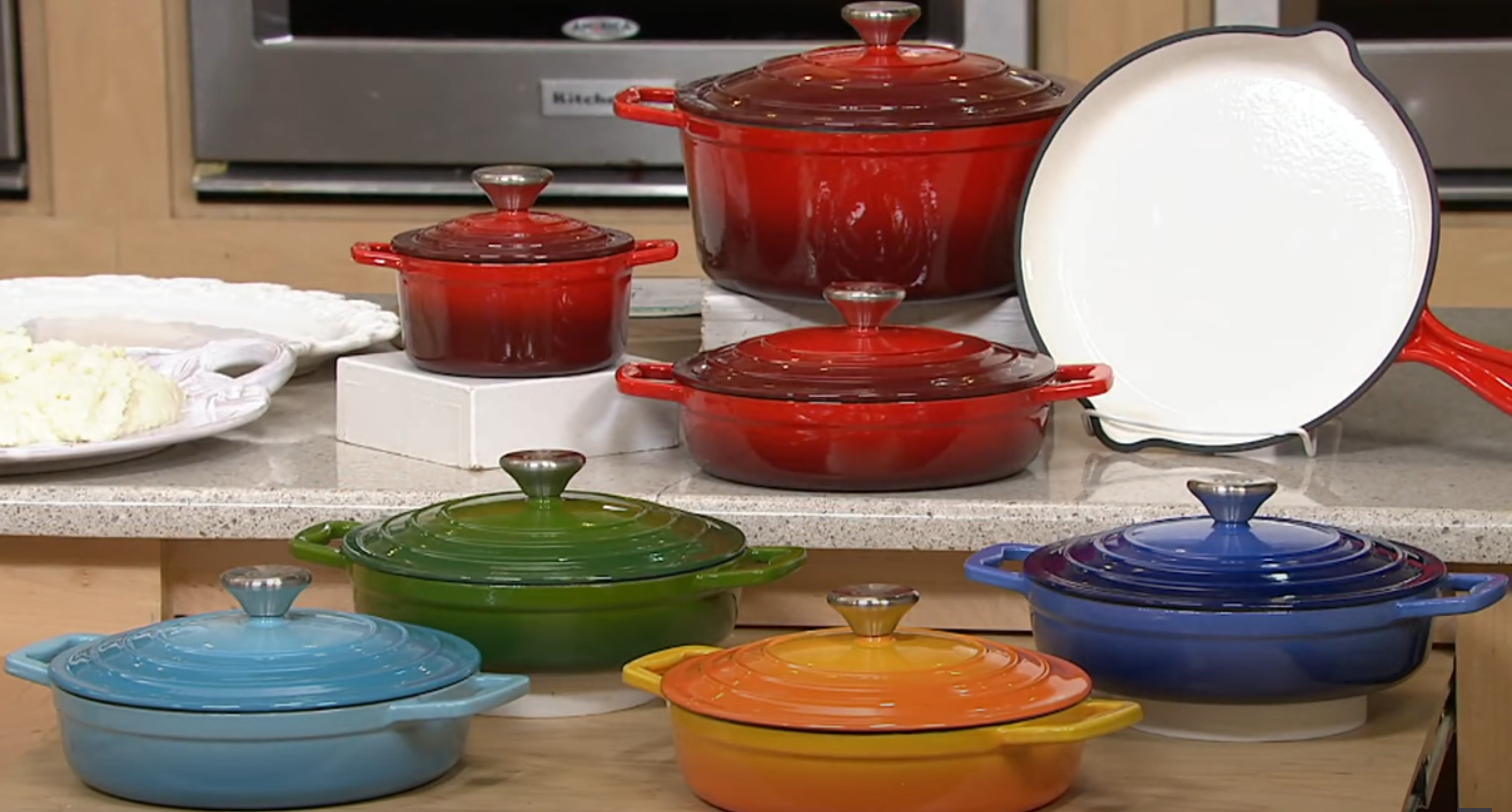
Čuguna trauku priekšrocības
Cast iron's ability to withstand and maintain very high cooking temperatures makes it a common choice for searing or frying, and its excellent heat retention makes it a good option for long-cooking stews or braised dishes.
Because cast-iron skillets can develop a "non-stick" surface when cared for properly, they are excellent for frying potatoes or preparing stir-fries. Some cooks consider cast iron a good choice for egg dishes, while others feel the iron adds an off-flavor to eggs. Other uses of cast-iron pans include baking, for instance for making cornbread, cobblers and cakes.
Many recipes call for the use of a cast-iron skillet or pot, especially so that the dish can be initially seared or fried on the stovetop then transferred into the oven, pan and all, to finish baking. Likewise, cast-iron skillets can double as baking dishes. This differs from many other cooking pots, which have varying components that may be damaged by the excessive temperatures of 400 °F (204 °C) or more.
-
Product introduction of Changan Cast Iron Co., LTD
JaunumiJan.24,2024
-
The Impact of the Leidenfrost Effect on Non-Stick Properties of Cast Iron Titanium Coated Cookware
JaunumiJan.24,2024
-
Kulinārijas atšķirības izpēte — čuguna kastroļi salīdzinājumā ar parastajiem kastroļiem
Jaunumi03.01.2024
-
Iepakošanas darbnīca pārkārtota ar plauktiem un preču 3D krātuvi
Jaunumi2023. gada 29. decembris
-
Lietota čuguna emaljas poda tīrīšanu var efektīvi veikt, veicot šādas darbības:
Jaunumi2023. gada 27. decembris
-
Metallogrāfiskā struktūra emaljai uz čuguna
Jaunumi2023. gada 27. decembris
